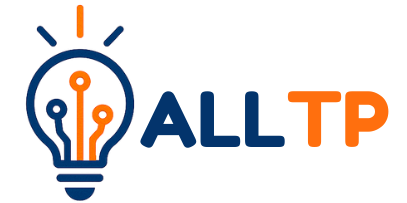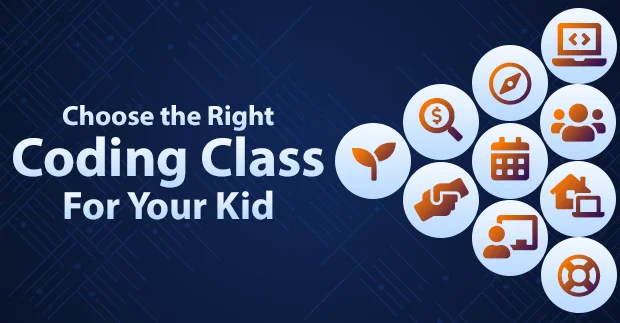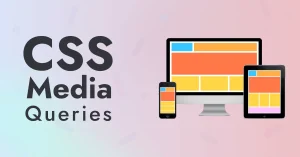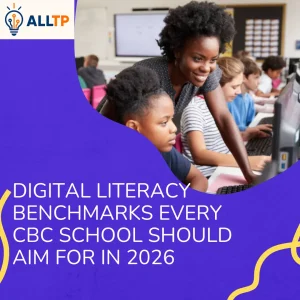In today’s digital world, coding is becoming just as important as reading and math. Learning to code not only teaches children how to build websites, apps, and games, it also sharpens their problem-solving, creativity, and logical thinking. As technology continues to shape every industry, coding is quickly becoming a vital skill for the future.
Nairobi has emerged as one of Africa’s fastest-growing tech hubs, with increased investment in digital skills and innovation. From tech startups to coding schools for kids, the city is full of opportunities for young learners to get started early and grow in the digital space.
This article is designed to help parents in Nairobi choose the right coding for kids class that fits their child’s needs, interests, and learning style while offering real value and growth.
Understand Your Child’s Needs
Before enrolling in a coding class, it’s important to understand where your child is starting from and what excites them most.
1. Age and Tech Exposure
Younger children (ages 6–9) may benefit from beginner-friendly platforms like Scratch or block-based coding, while older kids and teens can handle more advanced tools like Python, JavaScript, or game development engines. Consider how comfortable your child already is with using computers, typing, or navigating digital platforms.
2. Learning Style
Every child learns differently. Some thrive with visual lessons and animations, while others prefer hands-on tasks or working through trial and error. Choose a program that matches your child’s natural learning preferences, whether it’s building things, watching demos, or working through challenges independently.
3. Interests and Motivation
What sparks your child’s curiosity? Some kids love gaming and may enjoy designing their own simple games. Others might be into storytelling, digital art, robotics, or building mobile apps. A coding class that taps into their existing interests can boost motivation and make the learning process more fun and engaging.
Types of Coding Classes Available in Nairobi
Nairobi offers a growing variety of coding classes tailored to different schedules, learning goals, and age groups. Understanding the main types of programs can help you choose one that fits your child’s routine and interests.
Start by exploring All Things Programming, Coding for Kids, a trusted provider offering flexible, beginner-friendly programs for children in Nairobi and beyond.
1. Weekend Bootcamps
These are short-term programs held on Saturdays or Sundays, often lasting a few weeks. They focus on practical, project-based learning, for example, building a simple game or animation by the end of the course. Great for kids with busy weekday schedules.
Example: AllThingsProgramming offers both weekday and weekend tech bootcamps for children aged 4–18+.
2. After-school Programs
Held on weekday afternoons, these programs provide regular exposure to coding throughout the school term. They’re ideal for consistent learning and skill-building over time.
Example: Code With Kids KE partners with schools in Nairobi to offer on-site coding clubs.
3. Holiday Camps
During school breaks, intensive holiday camps keep kids engaged while learning new digital skills. These often run for 1–2 weeks and may cover topics like game design, app creation, or robotics.
Example: DigiKidz by iLab Africa offers holiday tech camps for ages 6–17.
4. Online, In-Person, and Hybrid Models
- Online classes offer flexibility and convenience, especially if travel is a challenge.
- In-person classes allow for direct interaction and hands-on guidance.
- Hybrid models combine both, offering structured live sessions with flexible learning at home.
Example: KCA University’s Tech Camps and Ubunifu College offer both online and in-person tech classes for kids and teens.
What to Look for in a Quality Program
Not all coding classes are created equal. When choosing the right program for your child in Nairobi, especially with the growing interest in Coding Kenya initiatives, here are the key features to watch for:
1. Age-Appropriate Curriculum
The content should match your child’s age and skill level. For younger kids, look for block-based coding platforms like Scratch or Tynker that teach logic through fun, drag-and-drop coding. Older children may be ready for Python, HTML/CSS, or even JavaScript. A well-designed curriculum grows with the learner and introduces more complexity over time.
2. Qualified and Friendly Instructors
Great instructors don’t just know how to code, they know how to teach kids. Ask about the background and training of the instructors. Look for programs that emphasize patience, mentorship, and clear communication, especially for beginners.
3. Small Class Sizes
Personal attention makes a big difference in learning tech skills. A lower student-to-teacher ratio ensures your child won’t get lost in the crowd and can ask questions freely. Ideal classes often have 6–12 students per instructor.
4. Emphasis on Projects and Creativity
Look for programs that let kids build real projects, like games, quizzes, animations, or websites. Creative expression keeps students engaged and gives them a sense of ownership over their learning.
5. Safe and Supportive Environment
For in-person classes, make sure the learning space is child-friendly, secure, and well-equipped. For online classes, check how instructors monitor engagement and ensure safe online interactions. Parents should feel confident that their kids are supported, supervised, and encouraged.
Consider Costs and Logistics
While quality is key, practical factors like cost, location, and schedule also play a big role in choosing the right coding class. Here’s what to consider:
1. Tuition Fees and Hidden Costs
Compare the prices of different programs, some charge per term, per camp, or per session. Make sure to ask about extra costs for items like laptops, software licenses, internet data (for online classes), or materials. A program that seems affordable upfront may have additional fees later.
2. Location and Transportation
For in-person classes, choose a location that’s safe, convenient, and easy to reach. Consider traffic, parking, or whether the school offers transportation. If you live farther from the city center, online or hybrid classes may be more practical.
3. Schedule Compatibility
Find a class that fits your family’s weekly routine. Weekend bootcamps are great for school-going kids, while holiday camps fill in school breaks productively. After-school programs should not clash with homework or other co-curricular activities.
4. Scholarships or Free Trials
Some coding schools in Nairobi offer scholarships, free introductory sessions, or discounts for siblings. Always ask, this can be a great way to test a program before fully committing. It also helps reduce financial pressure, especially if you’re enrolling more than one child.
You can also explore free resources like Harvard’s CS50 for Beginners, a popular free .edu course designed to introduce students of all ages to computer science. Programs like these can supplement or inspire your child’s coding journey at no cost.
Read Reviews and Get Recommendations
A little research can go a long way in helping you choose the best coding class for your child.
1. Talk to Other Parents
Ask friends, family, or neighbors whose children have attended coding classes. Local parenting groups on WhatsApp, Facebook, or Telegram often share honest feedback and trusted recommendations. Firsthand experiences can reveal details that websites don’t.
2. Check Testimonials and Online Reviews
Visit the school’s website or social media pages to see testimonials from other parents. Also check Google Reviews for more balanced feedback. Look for comments about teaching quality, child engagement, communication, and value for money.
3. Request a Trial Session or Visit
If possible, visit the classroom, meet the instructors, or attend a free trial class. This gives you a chance to observe how the class is run and how well your child connects with the environment. A good program should welcome parents to ask questions or sit in briefly.
Questions to Ask Before Enrolling
Before signing up, take time to ask the right questions, it ensures you understand what your child will gain and how the program works.
1. What Will My Child Learn by the End of the Program?
Ask for a clear outline of the learning outcomes. Will they create a game, animation, or basic website? Knowing the skills and tools your child will be exposed to helps set expectations.
2. How Is Progress Tracked or Reported?
Good programs regularly assess and communicate your child’s progress. Find out if there are weekly updates, project evaluations, or parent-teacher feedback sessions to keep you informed.
3. Is There a Certificate or Portfolio at the End?
Some classes offer certificates of completion, which can be motivating for kids. Others help students build digital portfolios of their work, a great way to showcase what they’ve learned and track growth over time.
4. Can the Child Repeat or Move to Advanced Levels?
A strong program should offer progression, from beginner to intermediate and advanced. Ask if your child can continue learning with the same provider as their skills grow, or repeat a level if needed for better mastery.
In conclusion, enrolling your child in a coding class is more than just a fun activity, it’s an investment in their future. Early exposure to tech education helps children build confidence, creativity, and critical thinking skills that will serve them for life, no matter what career they pursue.
With so many great programs available in Nairobi, take the time to explore your options. Compare the curriculum, instructors, learning style, and logistics to find a class that aligns with your child’s needs and your family’s goals.
And remember: you don’t have to go all in at once. Start small with a weekend workshop or a free trial, observe your child’s interest, and let them grow at their own pace. The key is to make learning both meaningful and enjoyable.
Start your child’s tech journey with confidence, join our Coding for Beginners Bootcamp, and turn curiosity into real coding skills today!




